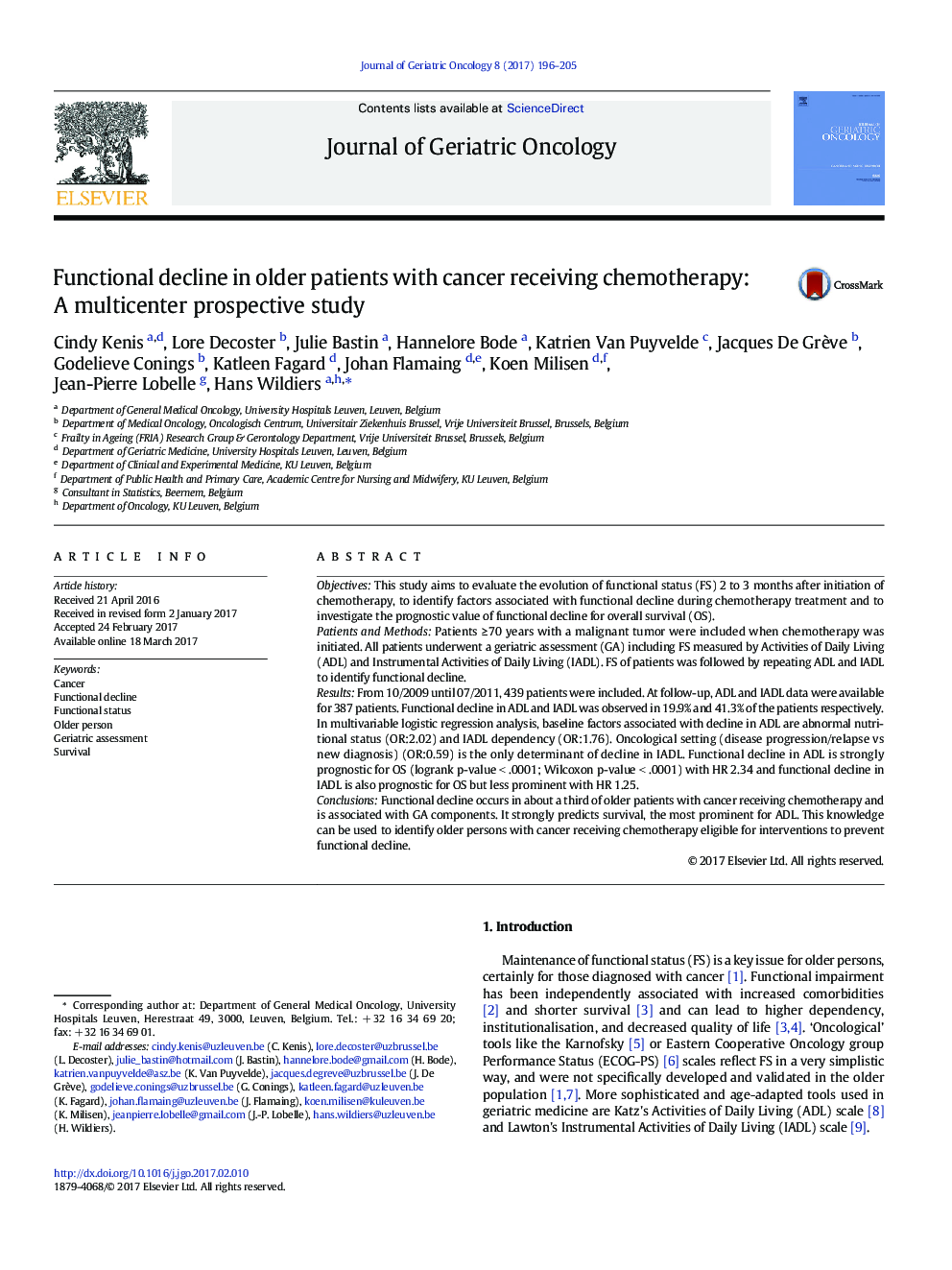| Article ID | Journal | Published Year | Pages | File Type |
|---|---|---|---|---|
| 5502351 | Journal of Geriatric Oncology | 2017 | 10 Pages |
ObjectivesThis study aims to evaluate the evolution of functional status (FS) 2 to 3 months after initiation of chemotherapy, to identify factors associated with functional decline during chemotherapy treatment and to investigate the prognostic value of functional decline for overall survival (OS).Patients and MethodsPatients â¥Â 70 years with a malignant tumor were included when chemotherapy was initiated. All patients underwent a geriatric assessment (GA) including FS measured by Activities of Daily Living (ADL) and Instrumental Activities of Daily Living (IADL). FS of patients was followed by repeating ADL and IADL to identify functional decline.ResultsFrom 10/2009 until 07/2011, 439 patients were included. At follow-up, ADL and IADL data were available for 387 patients. Functional decline in ADL and IADL was observed in 19.9% and 41.3% of the patients respectively. In multivariable logistic regression analysis, baseline factors associated with decline in ADL are abnormal nutritional status (OR:2.02) and IADL dependency (OR:1.76). Oncological setting (disease progression/relapse vs new diagnosis) (OR:0.59) is the only determinant of decline in IADL. Functional decline in ADL is strongly prognostic for OS (logrank p-value < .0001; Wilcoxon p-value < .0001) with HR 2.34 and functional decline in IADL is also prognostic for OS but less prominent with HR 1.25.ConclusionsFunctional decline occurs in about a third of older patients with cancer receiving chemotherapy and is associated with GA components. It strongly predicts survival, the most prominent for ADL. This knowledge can be used to identify older persons with cancer receiving chemotherapy eligible for interventions to prevent functional decline.
